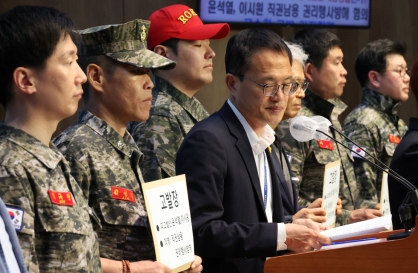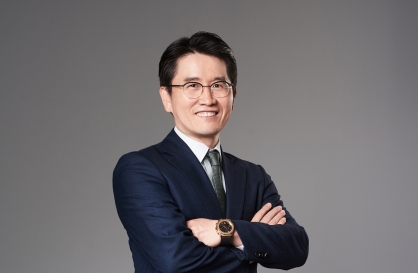[Editorial] A third party
Success of new party depends on how its leaders narrow differences
By Korea HeraldPublished : Feb. 14, 2024 - 05:30
A whirlwind merger among different political parties ahead of the general elections is nothing new in South Korea, but it reached a whole new level this time. Former leaders of the two main parties who are miles apart on the ideological spectrum teamed up amid growing voter disorientation with the rival parties.
Four parties and factions led by lawmakers who recently quit the ruling People Power Party and the main opposition Democratic Party of Korea agreed to unite as a single party over the Lunar New Year’s holidays, two months ahead of the April 10 elections.
The new Reform Party is led by Lee Nak-yon, former prime minister and leader of the Democratic Party, and ex-chief of the People Power Party Lee Jun-seok.
In their first meeting Sunday, the Reform Party said it will not create a “satellite party,” which the two main parties had launched in the previous election in 2020 to take advantage of a new system called “semi-mixed-member proportional representation.”
The majority-controlling Democratic Party leader Lee Jae-myung announced last week that his party has decided to support the semi-mixed-member system for proportional representatives, and apologized for failing to keep his presidential campaign pledge to prevent satellite parties.
The rival parties were chastised for exploiting loopholes in the semi-mixed-member system, which was intended to help minor parties boost their presence in the parliament, by having some of their lawmakers leave to create satellite parties, only to later reincorporate them. They both gained a few more proportional representation seats this way.
Amid such criticism, the ruling party earlier called for a return to the parallel voting system, but began taking steps late last month to launch a satellite party, saying it was a backup plan in case the majority-controlling opposition party decides to stick with the semi-mixed-member system.
It remains to be seen whether leading figures of the new party can bridge their differences to forge policies that can appeal to a meaningful share of voters who are disheartened by the two main parties. Seventy-two-year-old Lee Nak-yon was the second person in command under the former Moon Jae-in administration. Thirty-eight-year-old Lee Jun-seok poured his heart and soul into strategizing for a change of government as chief of the then-main opposition People Power Party. The two were at odds over all policies from the use of nuclear power plants to how to deal with North Korea.
The senior Lee, a former journalist who entered politics in 2000 after repeated recommendations by former President Kim Dae-jung, served as spokesperson of the Democratic Party and former President Roh Moo-hyun’s campaign team; was elected five times as a lawmaker; and served as governor of South Jeolla Province from 2014 until 2017, when he took office as the Moon administration‘s first prime minister. The younger Lee, a former chief of an educational nonprofit group who was recruited by former President Park Geun-hye to serve on the then-ruling party’s “emergency committee” in late 2011; became one of Park’s strongest critics four years later in the wake of a corruption scandal involving Park’s confidante; left her party to join the splinter Bareun Party and later other minor parties; and lost in three elections but became the youngest-ever leader of the People Power Party in 2021. Both Lees left their respective parties after insurmountable discord with Democratic Party leader Lee Jae-myung and those close to President Yoon Suk Yeol.
Lee Nak-yon, who identifies himself as a “pragmatic progressive,” said Tuesday his new party had to win at least 30 seats on the 300-member National Assembly in order to “stop the tyranny” of the two main parties. That seems to be a reasonable target considering poll results in late January in which 24 percent of the respondents said many candidates from “a third bloc” should be elected in April, as opposed to 33 percent for each of the two main parties. But the outcome, of course, will depend on how the Reform Party lives up to its name.
-
Articles by Korea Herald





![[Weekender] How DDP emerged as an icon of Seoul](http://res.heraldm.com/phpwas/restmb_idxmake.php?idx=644&simg=/content/image/2024/04/25/20240425050915_0.jpg&u=)
![[Herald Interview] Guggenheim Museum makes a push for technology-based art with LG](http://res.heraldm.com/phpwas/restmb_idxmake.php?idx=644&simg=/content/image/2024/04/26/20240426050608_0.jpg&u=20240428114717)




![[Music in drama] An ode to childhood trauma](http://res.heraldm.com/phpwas/restmb_idxmake.php?idx=644&simg=/content/image/2024/04/25/20240425050929_0.jpg&u=)






![[Herald Interview] Mistakes turn into blessings in street performance, director says](http://res.heraldm.com/phpwas/restmb_idxmake.php?idx=652&simg=/content/image/2024/04/28/20240428050150_0.jpg&u=20240428174656)
